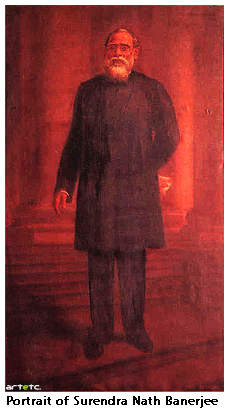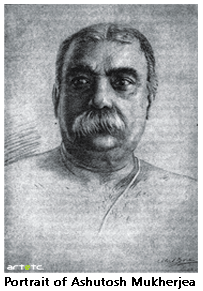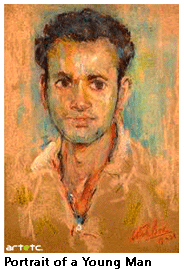- Publisher's Note
- Editorial
- Jogen Chowdhury: Maestro par Excellence
- Company School Paintings of Calcutta, Murshidabad, Patna (1750-1850): Doctoral Thesis of Late Dipak Bhattacharya (1960-2007)
- Kalighat Pat, a Protomodern Art Tradition?
- Academic Naturalism in Art of Bengal: The First Phase of Modernity
- Under the Banyan Tree - The Woodcut Prints of 19th Century Calcutta
- The Arabian Nights and the Web of Stories
- Gaganendranath Tagore's Satirical Drawings and Caricatures
- Gaganendranath's Moments with Cubism: Anxiety of Influence
- Abanindranath as Teacher: Many Moods, Some Recollections
- Atul Bose: A Short Evaluation
- J.P. Gangooly: Landscapes on Canvas
- Defined by Absence: Hemen Majumdar's Women
- Indra Dugar: A Profile of a Painter
- The Discreet Charm of Fluid Lines!
- Delightful Dots and Dazzling Environments: Kusama's Obsessive Neurosis
- Peaceful be Your Return O Lovely Bird, from Warm Lands Back to My Window
- Shunya: A Beginning from a Point of Neutrality
- The Tagore Phenomenon, Revisited
- The Bowl, Flat and Dynamic Architecture of the BMW Museum
- Baccarat Paperweights: Handmade to Perfection
- Byzantium and Islam: Age of Transition at the Metropolitan Museum of Art
- Outstanding Egyptian Art at the Metropolitan Museum of Art
- Retrospective of Wu Guanzhong at the Asia Society Museum
- Masterpieces from India's Late Mughal Period at the Asia Society Museum
- The Dhaka Art Summit: Emergence of Experimental Art Forms
- Many Moods of Eberhard Havekost
- Random Strokes
- Is it Putin or the Whole Russian State?
- The Onus Lies With Young India
- What Happened and What's Forthcoming
- Preview May, 2012 – June, 2012
- In the News, May 2012
- Art Events Kolkata, April – May 2012
- Mumbai Art Sighting
- Delhi Dias
- Art Bengaluru
- Musings from Chennai
- Cover
ART news & views
Atul Bose: A Short Evaluation
Issue No: 29 Month: 6 Year: 2012
by Sritama Halder
 Atul Bose was an artist whose long artistic life was marked by various important moments of the history of a country that had long been colonized by a foreign power and was engaged in a constant struggle for independence. Thus it would be more appropriate to judge the artist against the socio-political contexts than to judge his formal achievements as an individual artist, for the formal achievements are often subjective but the social and political conditions are operative in the making of an artist and to place to him/her in a larger context of the history of humanity. The artist Atul Bose whose artistic life was marked by a continuous confrontation with the Bengal School artists and the Orientalists must be evaluated in the context where art is the expression of politics. Also it should be kept in mind that Atul Bose must be seen as a pioneer in the field of Indian art education. His artistic achievements are throughout punctuated by his engagement with various art institutions and his tireless attempt to assimilate what was considered an alien language within the indigenous culture.
Atul Bose was an artist whose long artistic life was marked by various important moments of the history of a country that had long been colonized by a foreign power and was engaged in a constant struggle for independence. Thus it would be more appropriate to judge the artist against the socio-political contexts than to judge his formal achievements as an individual artist, for the formal achievements are often subjective but the social and political conditions are operative in the making of an artist and to place to him/her in a larger context of the history of humanity. The artist Atul Bose whose artistic life was marked by a continuous confrontation with the Bengal School artists and the Orientalists must be evaluated in the context where art is the expression of politics. Also it should be kept in mind that Atul Bose must be seen as a pioneer in the field of Indian art education. His artistic achievements are throughout punctuated by his engagement with various art institutions and his tireless attempt to assimilate what was considered an alien language within the indigenous culture.
With the introduction of British Academic art in the 19th century a profound change occurred in the history of Indian art. According to Partha Mitter one of the most powerful and immediate effects of the British rule was felt in the realm of artistic taste of the people of India. The academic style and naturalism prevalent in the Victorian England began to be patronized by the rich Indian class as the inevitable symbol of aristocracy and social superiority even before the art institutions were established by the British in the 1950s. Later the art institutions, through its syllabi and trainings, attempted to transform the artistic taste of the Indians. Raja Ravi Varma, even though he lacked a formal academic training, became the pioneering and the most sought after artist of this style. However, Ravi Varma was initially praised by the early nationalists for his use of puranic themes as the subject of painting but was denounced by the nationalists of the later period for using the colonizers' style of art.
 Nationalism hailed the Bengal School style as the purveyor of the true Indian identity and ethos as against the apparent decaying of the country caused by a conflicting foreign culture. The Bengal School founded by Abanindranath Tagore and carried on by his disciples and followers at the wake of a colonized people's realization of a 'nation' propagated the concept of a golden past of an ideal land as against the current political and social repression and the humiliation of being ruled by the colonizers. This Nationalistic idea was more involved with the abstract concept of a 'nation' and the abstract figure of the 'mother nation' and in the process it negated the tangible existence of its people who merely served as the instruments to bring in a freedom and future seeped in an ideal past. With the rise of Bengal School style and as the Government Art School - the largest art establishment in Calcutta at that time under E. B. Havell and Abanindranath Tagore continued to Indianize its syllabus, the prestige and patronage of the Calcutta based academic artists was beginning to wane.
Nationalism hailed the Bengal School style as the purveyor of the true Indian identity and ethos as against the apparent decaying of the country caused by a conflicting foreign culture. The Bengal School founded by Abanindranath Tagore and carried on by his disciples and followers at the wake of a colonized people's realization of a 'nation' propagated the concept of a golden past of an ideal land as against the current political and social repression and the humiliation of being ruled by the colonizers. This Nationalistic idea was more involved with the abstract concept of a 'nation' and the abstract figure of the 'mother nation' and in the process it negated the tangible existence of its people who merely served as the instruments to bring in a freedom and future seeped in an ideal past. With the rise of Bengal School style and as the Government Art School - the largest art establishment in Calcutta at that time under E. B. Havell and Abanindranath Tagore continued to Indianize its syllabus, the prestige and patronage of the Calcutta based academic artists was beginning to wane.
Because the Government Art School neglected academic art various private art institutions were established that offered courses in academic art. The Jubilee Art School was one of them. Atul Bose began his training as an artist in this institution where Hemen Mazumdar who later became the widely acclaimed painter was his fellow student. However, after Havell's retirement Percy Brown joined the Government Art School as the principal and he allowed the learning of the western style to be restored in the school. After a few years at the Jubilee Academy, Bose enrolled in the Government School of Art. Here he proved to be an artist of immense merit.
After finishing his studies Bose along with Hemen Majumdar and Jamini Roy embarked on his artistic career as a scenery painter for theatres and producing the portrait of the deceased from photographs which was a popular Victorian custom. During this time the silent war that they waged against the romantic mysticism of Bengal School as students became even more consolidated. The Bengal School artists used to publish their works in journals such as Prabashi and with a large Government subsidy published their own scholarly magazine Rupam. The trio decided to publish their works in various journals to bring public attention to their works. Upendra Kishore Roychudhury who was an ardent admirer of academic art helped them to publish their own journal Indian Art Academy. It was open to all the artists from all over India but it was primarily a platform for Atul Bose, Hemen Mazumdar and Jamini Roy who published full page colour prints of their prize winning works in this journal. Furthermore, from behind the veil of a nationwide oblivion, this journal brought the academic artists to the forefront and asserted their right to take part in the collective effort towards an overall artistic achievement. Bose and his friends also made portraits of the leaders of the freedom struggle and sold the portraits for low prices. This simple action apart from providing the much needed money for the artists also had a greater significance; it proved that all art forms at that time were rooted in a nationalist feeling with different modes of expression which not necessarily always involved a glorification of the past. Secondly the Bengal School's approach towards art was from an elitist point of view. They excluded a large number of ordinary people who were given only marginal places in the puranic/mythic or the royal history of India. By making portraits of the well known leaders Bose and his friends not only dealt with 'here' and 'now' they also communicated directly with those people who were forever outside the grand narrative of the past.




During the time when the Bengal School and the oriental style of art flourished government patronage shifted to the Indian Society of Oriental Art from the Art Gallery which was in favour of academic art. The selection was restricted only within the orientalist works which resulted into the exclusion of any kind of academic art. As the academic artists were forced to send their works to the exhibitions held outside Bengal even though few could afford it an urgent need was felt for a space that would enable the academic artists to exhibit their own works. Thus the rival Society of Fine Arts was established. The space for their first exhibition (22nd December, 1921-4th January, 1922) in the Government School of Art was given to them by their former teacher Percy Brown. Partha Mitter informs that Abanindranath Tagore was invited to join the Society as a honorary member but he simply ignored it. In the second exhibition held next year Atul Bose's work Comrades was highly praised by The Statesman as a 'fine, strong work'. Other critics also praised his bold yet simple treatment of his subject.
Around this time Bose made a pencil sketch of Sir Ashutosh Mukherjea, titled Bengal Tiger. The portrait sketch of the educationist's reveals the artist's ability to capture his seater's characteristic facial expressions and anatomical peculiarities. This sketch was so appreciated that it was used by the Times Literary Supplementary for Sir Ashutosh's obituary. In 1924 he received a scholarship to study in the Royal Academy of Art. He stayed in England till 1926 and made sketches and oil paintings from the nude. However, he learnt his most valuable lessons during his stay in England, when he worked with the English post-Impressionist Walter Sickert whose influence could be detected in Bose's use of grey and brown in some of his later works.
After his return from England, Bose was invited by Percy Brown to teach at the Government School of Art. But after Brown's retirement from school within just two years the Orientalists returned to the School this time with Mukul Dey as the first Indian Principal. Even though Dey had a rigorous art training in England under various eminent artists he was a close associate of the Tagores. Bose and Dey had already formed an uneasy relationship in England when Bose refused to work with Dey when the latter was decorating the Indian Pavilion at the Empire Festival. So when Dey began reorganizing the syllabus, introducing various reform programs in teaching and student discipline and most of all his open hostility towards the associates of Brown including his Deputy Jamini Gangooly who had to leave Bose was not entirely comfortable in the school. So even though he was appointed as the successor of Gangooly he had no other choice but to leave.
That his pedagogic approach was continuously challenged led him to co-found an art society which he hoped would be devoid of any faction politics. Under the aegis of Maharaja Pradyot Kumar Thakur, the society resolved to form an all-India association in order to promote Indian art with the central government's help. This association Indian Academy of Fine Arts, however, had its share of problems. Calcutta's hope to organize a nationwide exhibition was rebuffed as the Bombay artists created tensions over a previously done collaborative project. As a result of this tension the word 'Indian' was dropped from the name. On 23rd December, 1933, Atul Bose, as the joint secretary, organized the society's first exhibition.
In the 1940s Indian art experienced an ideological shift in its course and a part of it veered more towards Marxist socialist ideals. For the first time in the history of Indian art those artists emerged whose political consciousness was based on their immediate realities that became the basis of their arts as well. Atul Bose was among this group of artists whose reactions to the social injustice and repression were immediate and harsh. The Bengal Famine (1943-1944) was one of the greatest cruelties ever to happen to the human race for in this man-made famine thousands of farmers died of hunger because of a section consisting of a handful of people benefitted from the war. The British government's scorch earth policy and natural disaster destroyed most of the crops in Bengal. The rest of it was stocked and hoarded. Black market and excess greed of some people created a shortage of food and grain. The people from rural areas migrated to the cities in search of food only to die on the streets. Artists like Chittaprosad Bhattacharya, Zainul Abedin, Gobardhan Ash and Gopal Ghosh poignantly captured the inhumanity of the situation. Atul Bose also was a part of it. He made sketches and some oil paintings. But his works such as The Birth of Kalki was evidently dominated by his training as an academic artist. The numerous preparatory drawings show detailed studies and repeated rearrangement of the figures and other objects. Thus the final painting lacks the immediacy that is required in such paintings and could be found in the works of Chittaprosad and Zainul Abedin and look more like a precisely planned, well balanced composition done in the studio.
Because of Bose's aspiration to establish art institutions where an otherwise neglected art style would find its space somehow sidelined his identity as an artist. The immense potential shown in the portrait of Sir Ashutosh Mukherjea or in the studies of the nudes during his stay in London was not fully realized in the works of his later period. Thus the preliminary study of his wife in red chalk and the final production in oil both done in 1939 show a minutely observed face looking out at the viewer prove his extreme mastery over the medium but becomes only the naturalistic rendering of a human face that lacks the communication between her inner and outer self. It could be because of the artist's overt dependence on his idea of objectivity empirical observation required in representational art. The boldness and spontaneity so evident in the Bengal Tiger is lost. Atul Bose was a teacher who was not entirely understood and an artist with a series of irreversibly lost opportunities, forgotten hopes and unmitigated frustrations.